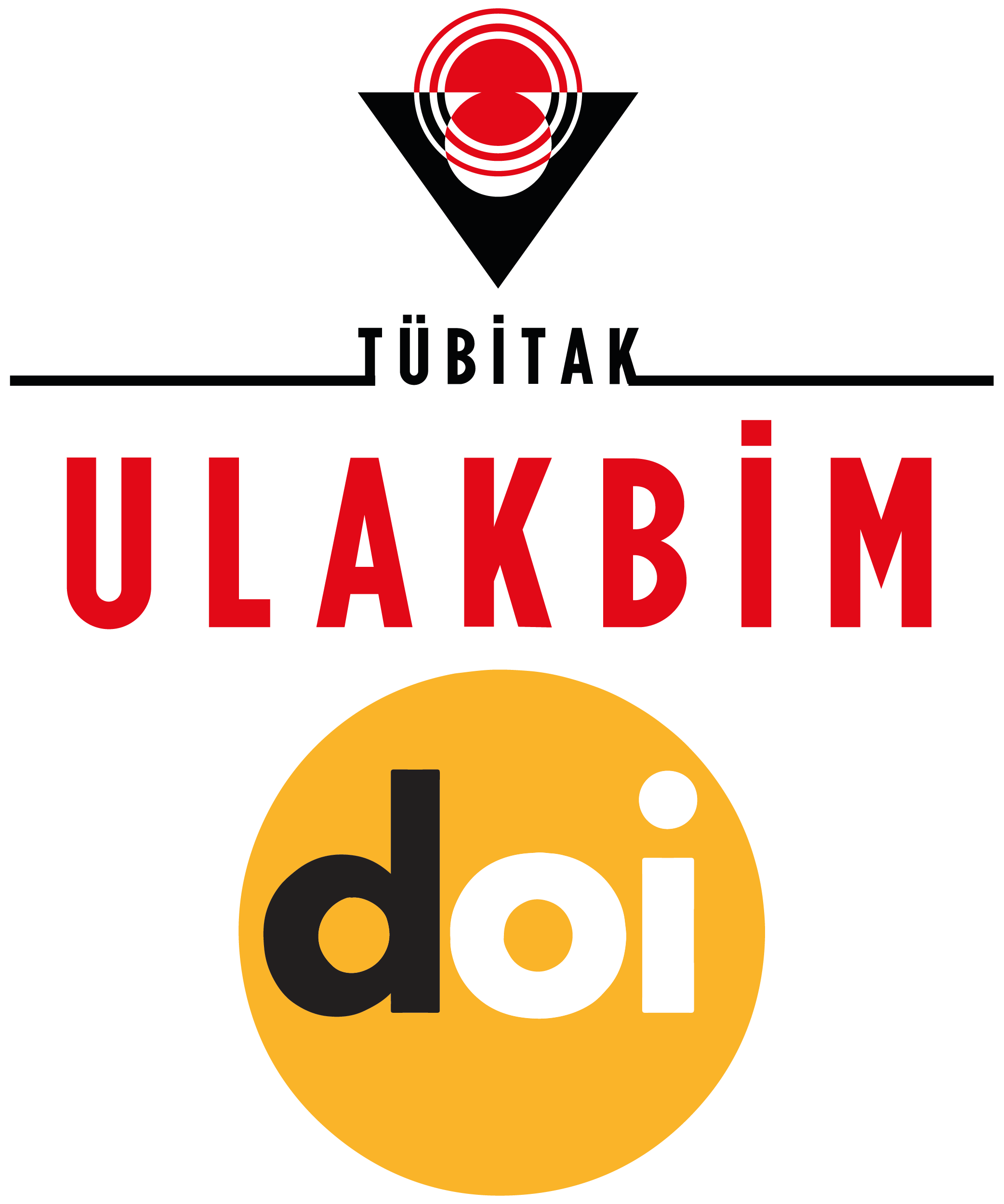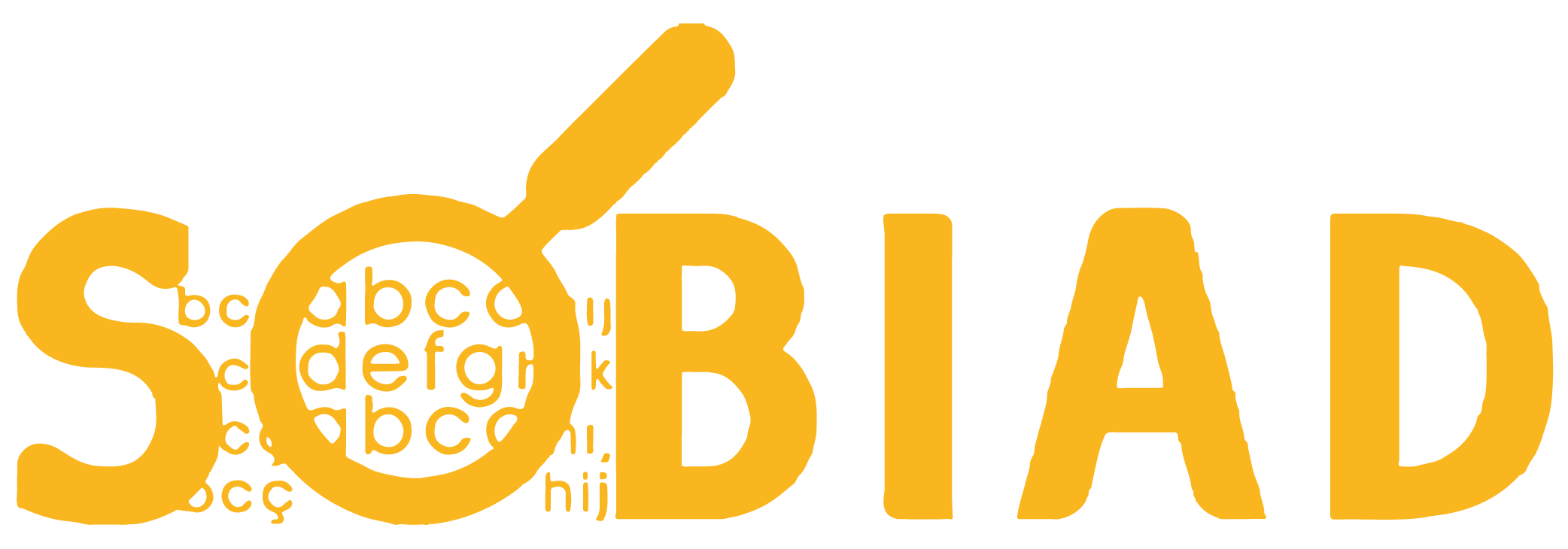Associations Between Food Neophobia and Culinary Creativity: A Study with A Sample of Chefs and bartenders in Turkey
DOI:
https://doi.org/10.21325/jotags.2020.718Keywords:
Food neophobia, Creativity, Chef, BartenderAbstract
Food neophobia, which refers to avoiding consuming new and different foods, can cause many physical and psychological effects. The aim of this study is to determine the effect of the food neophobia level of the Turkish cooks and bartenders (n=553) on the creative personality trait. The universe of the research consists of chefs and bartenders working in restaurants, hotels, cafes and bars in Istanbul. In this context, a questionnaire was applied to employees who were willing to participate in the research. The questionnaire form consists of three parts: Demographic characteristics, general/food neophobia scale, and creative personality trait scale. Participants achieved certain scores based on their responses to the expressions of neophobia and creativity, and these scores determine the neophobia/creativity level of the participants. Many of the participants had a low level of general neophobia (48.7%), and a moderate level of food neophobia (65.3%) and creative personality traits (58%). In addition, there is a positive correlation between the the general neophobia and the food neophobia level of the participants, and a negative significant correlation between the general/food neophobia and creativity level.
References
Albors-Garrigós, J., Martínez Monzo, J., & García-Segovia, P., (2018). Knowledge dynamics as drivers of innovation in Haute cuisine and culinary services. Industry and Innovation, 25(1), 84–111. https://doi.org/10.1080/13662716.2016.1268950.
Amabile, T. M., Conti, R., Coon, H., Lazenby, J., & Herron, M. (1996), Assessing the work environment for creativity. Academy of Management Journal, 39(5), 1154-1184.
Arvola, A., Lähteenmäki, L., & Tuorila, H. (1999). Predicting the intent to purchase unfamiliar and familiar cheeses: The effects of attitudes, expected liking and food neophobia. Appetitte, 32, 113-126.
Avcı, U., & Topaloğlu, C. (2009). Hiyerarşik kademelere göre liderlik davranışlarını algılama farklılıkları: Otel çalışanları üzerine bir araştırma. KMU İİBF Dergisi, 11(16), 1-20.
Baldwin, W. (2018). Chef's sabbatical: An analysis of chef's gastronomic research through culinary tourism. International Journal of Gastronomy and Food Science, 13, 65-72. https://doi.org/10.1016/j.ijgfs.2018.05.006.
Blank, J. F. (2007). Molecular gastronomy: Overview of a controversial food science discipline. Journal of Agricultural & Food Information, 8(3), 77-85. https://doi.org/10.1300/J108v08n03_07.
Bouty, I., & Gomez, M. L. (2013). Creativity in haute cuisine: Strategic knowledge and practice in gourmet kitchens. Journal of Culinary Science & Technology, 11:80–95. https://doi.org/10.1080/15428052.2012.728979.
Ceylan, V., & Akar Sahingoz, S. (2019). Yetişkin bireylerde gıda neofobi düzeyinin belirlenmesi. Journal of Tourism and Gastronomy Studies, 7(2), 772-784. https://doi.org/10.21325/jotags.2019.391
Cooke, L. J., Haworth, C. M. A., & Wardle, J. (2007). Genetic and enviromental influences on children’s food neophobia. The American Journal of Clinical Nutrition, 86(2), 428–433. https://doi.org/10.1093/ajcn/86.2.428.
Cooke, L., Carnell, S., & Wardle, J. (2006). Food neophobia and mealtime food consumption in 4 – 5 year old children. International Journal of Behavioral Nutrition and Phsical Activity, 3(14), 1-6. https://doi.org/10.1186/1479-5868-3-14.
Damsbo-Svendsen, M., Frøst, M. B., & Olsen, A. (2017). Development of novel tools to measure food neophobia in children. Appetite, 113, 255-263. https://doi.org/10.1016/j.appet.2017.02.035.
De Solier, I. (2010). Liquid nitrogen pistachios: Molecular gastronomy, elBulli and foodies. European Journal of Cultural Studies 13(2) 155–170. https://doi.org/10.1177/1367549409352275.
Dovey, T. M., Staples, P. A., Gibson, E. L., & Halford, J. C. G. (2007). Food neophobia and ‘picky/fussy’ eating in children: A rewiew. Appetite, 50, 181-193. https://doi.org/10.1016/j.appet.2007.09.009.
Edwards, J. S. A., Hartwell, H. L., & Brown, L. (2010). Changes in food neophobia and dietary habits of international students. Journal of Human Nutrition and Dietetics, 23, 301-311. https://doi.org/10.1111/j.1365-277X.2010.01066.x.
Falciglia, G. A., Couch, S. C., Gribble, L. S., Pabst, S. M., & Frank, R. (2000). Food neophobia in childhood affects dietary variety. Journal of the American Dietetic Association, 100(12), 1474–1481. https://doi:10.1016/s0002-8223(00)00412-0.
Finistrella, V., Manco, M., Ferara, A., Rustico, C., Presaghi, F., & Morino, G., (2012). Cross-sectional exploration of maternal reports of food neophobia and pickiness in preschooler- mother dyads. Journal of the American College of Nutrition, 31(3), 152. https://doi.org/10.1080/07315724.2012.10720022.
Fisher, B. J., & Specht, D. K. (1999). Successful aging and creativity in later life. Journal of Aging Studies, 13(4), 457-472. https://doi.org/10.1016/S0890-4065(99)00021-3.
Galloway, A. T., Lee, Y., & Birch, L. L. (2003). Predictors and consequences of food neophobia and pickiness in young girls. Journal of the American Dietetic Association, 103(6), 692–698. https://doi.org/10.1053/jada.2003.50134.
Giordano, S., Clodoveo, M. L., Gennaro, B. D., & Corbo, F. (2018). Factors determining neophobia and neophilia with regard to new technologies applied to the food sector: A systematic review. International Journal of Gastronomy and Food Science 11, 1–19. https://doi.org/10.1016/j.ijgfs.2017.10.001.
Gomes, A. I., Barros, L., Pereira, A. I., Roberto, M. S., & Mendonça, M. (2018). Assessing children’s willingness to try new foods: Validation of a Portuguese version of the child’s food neophobia scale for parents of young children. Food Quality and Preference, 63, 151-158. https://doi.org/10.1016/j.foodqual.2017.09.002.
Hair, J. F., Black, W. C., Babin, B. J., Anderson, R. E., & Tatham, R. L. (2013). Multivariate data analysis. London: Pearson Education.
Horng, J. S., & Lin, L. (2009). The development of a scale for evaluating creative culinary products. Creativity Research Journal, 21(1), 54-63. https://doi.org/10.1080/10400410802633491.
Horng, J., & Lin, L. (2017). Gastronomy and culinary creativity. In J. Kaufman, V. Glăveanu, & J. Baer (Eds.), The Cambridge handbook of creativity across domains (Cambridge Handbooks in Psychology, pp. 462-478). Cambridge: Cambridge University Press. https://doi.org/10.1017/9781316274385.025.
Hsia, H., Chen, T. L., & Tan, T. S. (2020). Examining the concept of creativity in a culinary school setting. Journal of Hospitality & Tourism Education. https://doi.org/10.1080/10963758.2020.1726766.
Huang, L., Bai, L., Zhang, X., & Gong, S. (2019). Re-understanding the antecedents of functional foods purchase: Mediating effect of purchase attitude and moderating effect of food neophobia. Food Quality and Preference, 73, 266-275. https://doi.org/10.1016/j.foodqual.2018.11.001.
Kabadayı, M., & Türkay, O. (2019). Yönetsel gücün örgütsel güven-performans ve özdeşleşme etkileşimi kapsamındaki rolü: Bodrum’daki otel işletmelerinde bir uygulama. Yönetim Bilimleri Dergisi, 35(18), 111-139. https://doi.org/10.35408/comuybd.547147.
Knaapila, A., Silventoinen, K., Broms, U., Rose, R. J., Perola, M., Kaprio, J., & Tuorila, H. M. (2011). Food neophobia in young adults: Genetic architecture and relation to personality, pleasantness and use frequency of foods, and body mass index—a twin study. Behavior Genetics, 41, 512–521. https://doi.org/10.1007/s10519-010-9403-8.
Kuşluvan, Z., & Kuşluvan, S. (2005). Otel işletmelerinde iş ve işletme ile ilgili faktörlerin işgören tatmini üzerindeki görece etkisi: Nevşehir örneği. Anatolia: Turizm Araştırmaları Dergisi, 16(2), 183-203.
Kutbi, H. A., Alhatmi, A. A., Alsulamş, M. H., Alghamdi, S. S., Shamel, M. A., Mumena, W. A., & Mosli, R. H. (2019). Food neophobia and pickiness among children and associations with socioenvironmental and cognitive factors. Appetite, 142, 104373. https://doi.org/10.1016/j.appet.2019.104373.
La Barbera, F., Verneau, F., & Grunert, K. (2018). Understanding Westerners’ disgust for the eating of insects: The role of food neophobia and implicit associations. Food Quality and Preference, 64, 120-125. https://doi.org/10.1016/j.foodqual.2017.10.002.
Leschziner, V. (2015). At the chef's table: Culinary creativity in elite restaurants. California: Stanford University Press.
Litman, J. A. (2005). Curiosity and the pleasures of learning: Wanting and liking new information. Cognition and Emotion, 19, 793–814. https://doi.org/10.1080/02699930541000101.
Republic of Turkey Ministry of Culture and Tourism. (2020). Turizm işletmesi belgeli tesisler. https://yigm.ktb.gov.tr/TR-9579/turizm-tesisleri.html Accessed 29 March 2020.
Pang, L. (2017). The training and creativity of professional chefs: Stoking the imagination in global gastronomic discourse. Appetite 119, 48-53. https://doi.org/10.1016/j.appet.2017.08.014.
Pliner P., & Hobden, K., (1992). Development of a scale to measure trait of food neophobia in humans. Appetite, 19, 105-120. https://doi.org/10.1016/0195-6663(92)90014-w.
Pliner, P., & Salvy, S. J. (2006). Food neophobia in humans. In the psychology of food choice (Eds: R. Shepherd, M. Raats). Oxfordshire, CABI.
Reverdy, C., Chesnel, F, Schlich, P., Köster, E. P., & Lange, C. (2008). Effect of sensory education on willingness to taste novel food in children. Appetite, 51, 156-165. https://doi.org/10.1016/j.appet.2008.01.010.
Şahin, F., & Danışman, S. (2017). Yaratıcı kişilik özellikleri ölçeği: Güvenilirlik ve geçerlik çalışması. Karabük Üniversitesi Sosyal Bilimler Enstitüsü Dergisi, 7(2), 747-760.
Schutte, N. S., & Malouff, J. M. (2020). Connections between curiosity, flow and creativity. Personality and Individual Differences 152, 1-3. https://doi.org/10.1016/j.paid.2019.109555.
Sekeran, U., & Bougie, R. (2016). Research methods for business: A skill building approach. (7th ed.). New Jersey: John Wiley & Sons.
Simonton, D. K. (2000). Creativity: cognitive, personal, developmental, and social aspects. American Psychologist, 55(1), 151-158. https://doi.org/10.1037//0003-066x.55.1.151.
Stierand, M., Dörfler, V., & MacBryde, J. (2014). Creativity and innovation in Haute Cuisine. Creativity and Innovation Management, 23(1), 15–28. https://doi.org/10.1111/caim.12050.
Stratton, L. M., Vella, M. N., Sheeshka, J., & Duncan, A. M. (2015). Food neophobia is related to factors associated with functional food consumption in older adults. Food Quality and Preference, 41, 133-140. https://doi.org/10.1016/j.foodqual.2014.11.008.
Tennyson, R.D., & Breuer, K. (2002). Improving problem solving and creativity through use of complex-dynamic simulations. Computers in Human Behavior, 18, 650–668. https://doi.org/10.1016/S0747-5632(02)00022-5.
Tongchaiprasit, P., & Ariyabuddhiphongs, V. (2016). Creativity and turnover intention among hotel chefs: The mediatingeffects of job satisfaction and job stress. International Journal of Hospitality Management, 55, 33–40. https://doi.org/10.1016/j.ijhm.2016.02.009.
Tuorilla, H., Lahteenmaki, L., Pohjalainen, L., & Lotti, L. (2001). Food neophobia among the Finns and related responses to familiar and unfamiliar foods. Food Quality and Preference, 12, 29-37. https://doi.org/10.1016/S0950-3293(00)00025-2.
Vargas-Sáncheza, A., & López-Guzmán, T. (2018). Protection of culinary knowledge generation in Michelin-Starred restaurants. The Spanish case. International Journal of Gastronomy and Food Science, 14, 27–34. https://doi.org/10.1016/j.ijgfs.2018.09.001.
Varinli, I. (2004). Hizmet işletmelerinde çalışanların etik olmayan davranışlara ilişkin değerlendirmeleri: Otel işletmelerinde bir uygulama. Ege Akademik Bakış Dergisi, 4(1), 44-53.
Vega, C., & Ubbink, J. (2008). Molecular gastronomy: A food fad or science supporting innovative cuisine? Trends in Food Science & Technology, 19(7), 372-382. https://doi.org/10.1016/j.tifs.2008.01.006.
Vidigal, M. C. T. R., Minim, V. P. R., Moreira, R. T., Pires, A. C. D., Ferreira, M. A. M., & Goncalves, A. C. A. (2014). Translation and validation to Portuguese language of food technology neophobia scale. Ciência Rural 44(1), 174–180. https://doi.org/10.1590/S0103-84782013005000150.
Yigit, S., & Dogdubay, M. (2017). Gastronomi eğitimi alan öğrencilerde yiyecekte yenilik korkusu (food neophobia): Balıkesir Üniversitesi örneği. Journal of Tourism and Gastronomy Studies 5(2), 162. https://doi.org/168. 10.21325/jotags.2017.120.
Published
How to Cite
Issue
Section
License
Copyright (c) 2023 Journal of Tourism & Gastronomy Studies

This work is licensed under a Creative Commons Attribution-NonCommercial 4.0 International License.








